15 Ways to Lose Weight While Traveling

Staying fit and losing weight on-the-go present unique challenges, as both goals mean different things to different people. Fitness can range from maintaining cardiovascular health and muscle tone to having the energy to enjoy travel activities. Similarly, weight loss can encompass shedding pounds for surgery, gradual slimming, or simply managing weight for health reasons. Despite varied interpretations, the intersection of fitness and weight loss centers on optimizing energy, prioritizing cardiovascular and muscular health, and ensuring mental well-being.
I've curated this list of 15 travel hacks to align with core principles that will aid both fitness enthusiasts and those seeking weight loss. The guidelines emphasize nutrient-rich snacking, hydration, and physical activity to create a strategy that works across various goals.
Do Your Homework
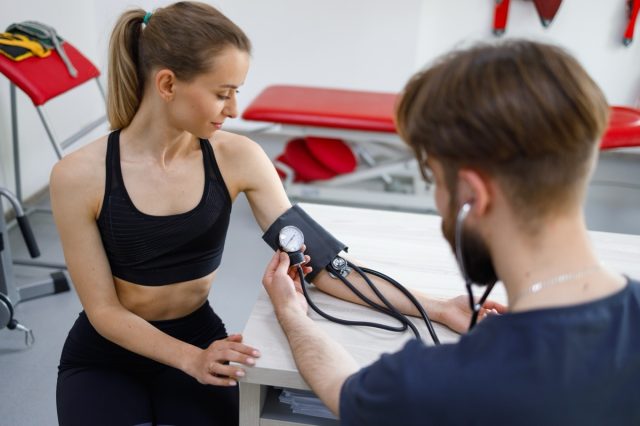
Before diving in, consider the following guidelines for effectively using this list:
- Consult with Healthcare Providers: Seek guidance from your doctor or dietitian to ensure changes align with your specific needs.
- Use the Mini Assessment: Apply this framework to determine your primary, secondary, and tertiary goals.
Define Your Fitness Goals

Define your primary goals, starting with fitness:
– Are you focusing on cardiovascular fitness (e.g., stamina, endurance)?
– Do you want to maintain or improve muscle tone and strength?
– Is flexibility (e.g., reducing stiffness, better mobility) a priority?
Define Your Weight Loss Goals

Next, define your weight loss goal:
– Is your weight loss goal for health reasons, post-surgery prep, or general slimming down?
– Do you need to shed a specific number of pounds within a timeframe?
– Are you looking to reduce stress eating or overeating in general?
Understand the Purpose of Your Travel
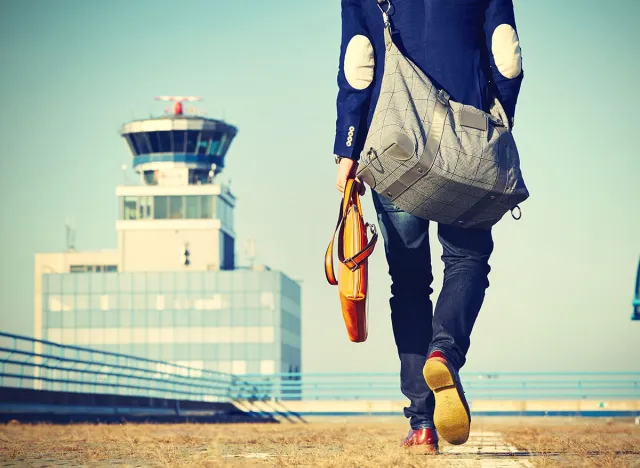
Next, understand your travel context. What is the purpose of your travel?
– Is your trip primarily for work or leisure, and how much time will you have for fitness?
– Are you attending multiple meetings or events that will limit workout opportunities?
– Will you be crossing time zones and potentially struggle with jet lag?
Consider the Availability of Facilities
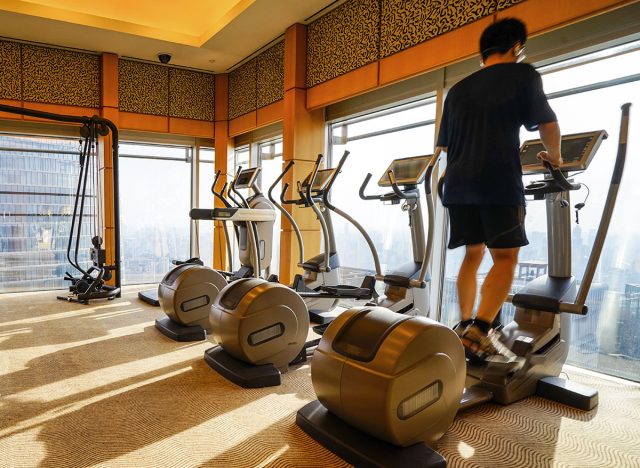
Next, look at the availability of facilities:
– Do your accommodations include gym facilities or swimming pools?
– Will you have access to parks, hiking trails, or walking paths nearby?
– Are you willing to carry portable equipment (e.g., resistance bands)?
Also, Take Into Consideration Your Schedule

Then look at your daily schedules:
– Will your schedule permit early morning or evening workouts?
– Are you traveling with a companion who also has fitness goals or constraints?
– Do you prefer structured meal times or on-the-go snacking?
Rank Your Goals
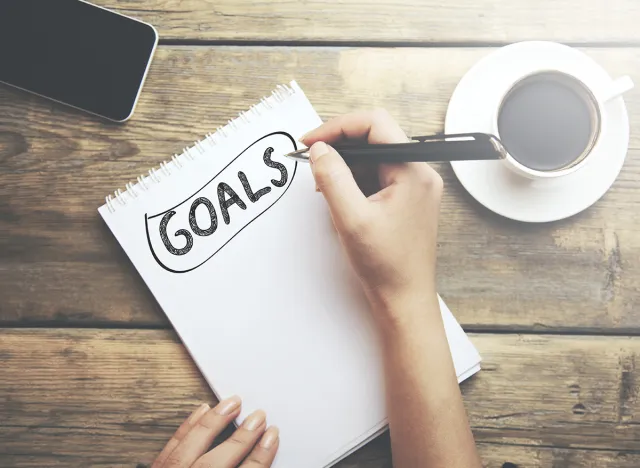
Now, rank your goals. Based on your responses, prioritize the following categories from primary (critical), secondary (complementary), and tertiary (optional):
– Primary (out of list of 15 choose one):
– Habits crucial to your immediate fitness or weight loss goals.
– Examples: protein-rich breakfast, weight exercises, staying hydrated.
– Secondary (out of list of 15 choose one):
– Habits that complement primary ones to maintain consistency.
– Examples: tracking activity, mindful eating, walking tours.
– Tertiary (out of list of 15 choose one):
– Habits that enhance fitness but aren't essential for meeting your core goals.
– Examples: self-care routines, active accommodations.
Review and Refine
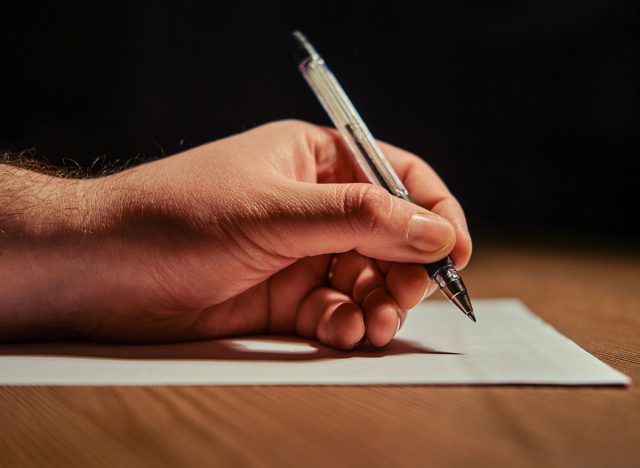
Finally, review and refine:
– List your top 3 habits in order of priority and compare them with your available resources.
– Adjust your list to align with your travel schedule and circumstances; tailoring habits to your unique travel style and focus on flexibility, avoiding rigidity that can cause anxiety
– Focus on manageable daily actions that align with your goals, whether you're staying fit or losing weight.
This System Will Help to Curate Travel and Fitness Habits
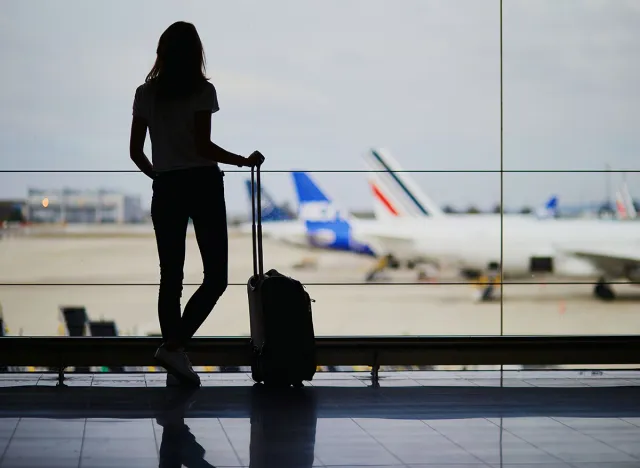
Now you are ready for the habits. This system provides a comprehensive way to curate travel fitness habits that are personalized, effective, and conducive to your health goals without overwhelming yourself.
RELATED: 15 Foods to Eat at 7-Eleven to Lose Body Fat
Pack Nutrient-Dense Snacks
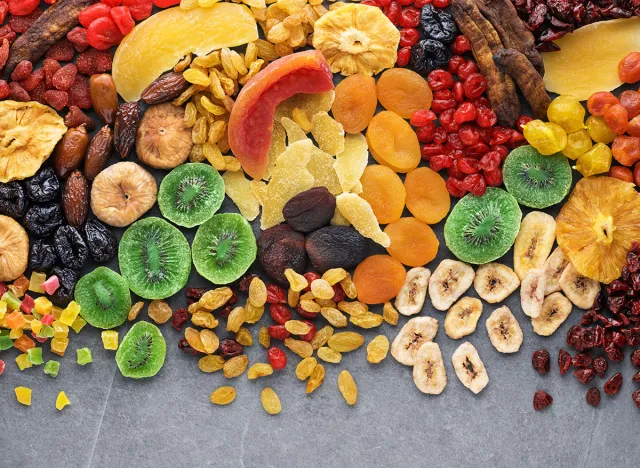
Prepare portable, minimally processed snacks like nuts, protein bars, and jerky to maintain energy and reduce hunger.
Why: Reduces reliance on ultra-processed snacks or fast food that may contain excessive sugars or sodium. Studies reveal that balanced snacks sustain energy and help with portion control.
What to Do:
- Prepare portioned packs of roasted chickpeas, nuts, or trail mix.
- Bring protein bars with low added sugar.
- Carry dried fruit, turkey jerky, or whole-grain crackers.
- Try canned seafood (like sardines) for protein.
Pitfalls:
- Misjudging portions, leading to overeating.
- Not considering if item has enough fiber and protein to stay full
- Going too long without snacks and then needing more food than the snack
Hydrate Consistently
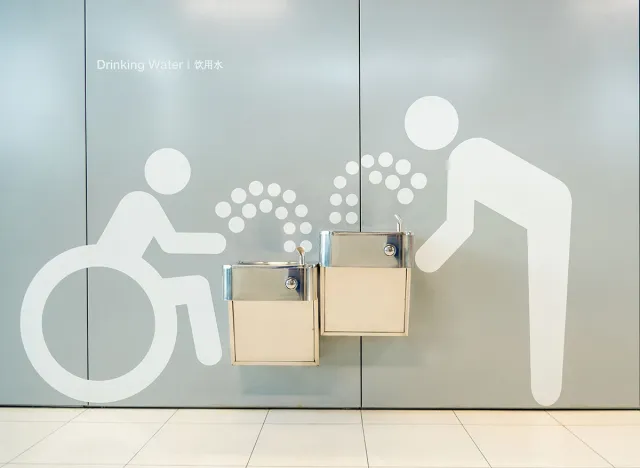
Drink water regularly to avoid dehydration and maintain optimal energy.
Why: Hydration is vital since dehydration is linked to fatigue and reduced concentration. Lack of fluids can impair cardiovascular health and lead to cognitive impairment, especially during long journeys.
What to Do:
- Carry a reusable water bottle with a filter.
- Track daily water intake via apps or reminders.
- Drink electrolyte-rich beverages if you're sweating or in hot climates.
- Choose water-based snacks like cucumbers or melons.
Pitfalls:
– Drinking coffee or alcohol instead of water.
– Forgetting to drink due to travel distractions.
– Assuming other drinks can substitute for water.
Walk Whenever Possible

Prefer walking over public transport or driving rental cars/Uber for short distances.
Why: Daily walking aids cardiovascular fitness, reduces stress, and increases daily calorie burn.
What to Do:
- Book hotels near walking paths or parks.
- Plan walking tours for sightseeing.
- Use fitness trackers or apps to monitor steps.
- Replace short taxi rides with walks to nearby restaurants.
Pitfalls:
– Not having comfortable footwear for walking.
– Misjudging distances, resulting in exhaustion.
– Skipping walking due to poor weather.
Prioritize Protein-Rich Breakfasts
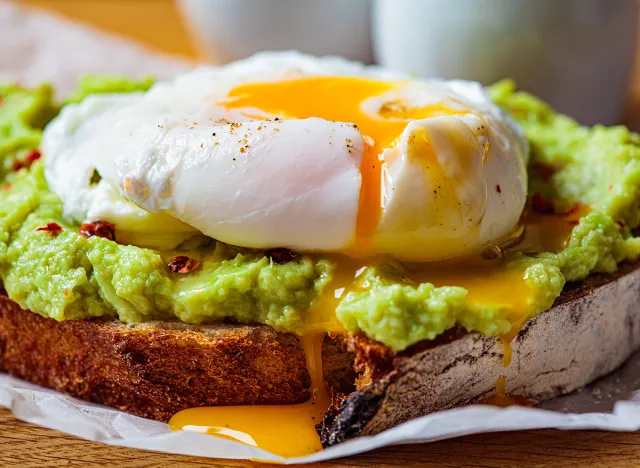
Start the day with high-protein foods like eggs or yogurt to promote fullness.
Why: Protein aids muscle maintenance and curbs hunger. Protein-rich meals also promote glycemic control and reduce mid-morning cravings.
What to Do:
- Select eggs, lean meats, or Greek yogurt at the hotel breakfast buffet.
- Add protein powder to smoothies.
- Bring instant oatmeal with protein powder for quick breakfasts.
- Choose local breakfast options that offer eggs or tofu.
Pitfalls:
– Relying solely on sugary pastries.
– Skipping breakfast entirely due to time constraints.
– Ignoring breakfast quality, leading to cravings later.
RELATED: 20 Easy Ways to Lose 2 Pounds a Week and Keep It Off Sustainably
Track Your Activity
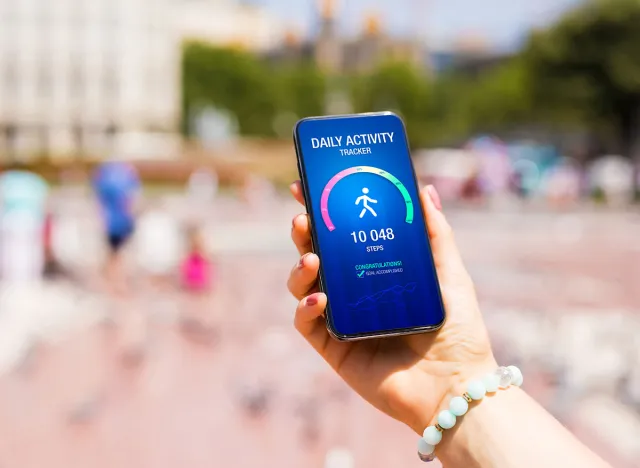
Monitor physical activity through fitness journals or devices to stay motivated.
Why: Tracking goals provides structure and keeps fitness aligned with travel objectives. It encourages accountability, reflection, and habit building.
What to Do:
- Use a fitness tracker to monitor steps.
- Set SMART goals (Specific, Measurable, Achievable, Relevant, Time-bound).
- Reflect on challenges and progress weekly.
- Celebrate milestones with non-food rewards like massages.
Pitfalls:
– Setting unrealistic goals that lead to discouragement.
– Tracking inconsistently, reducing motivation.
– Ignoring smaller achievements.
Do Bodyweight Exercises
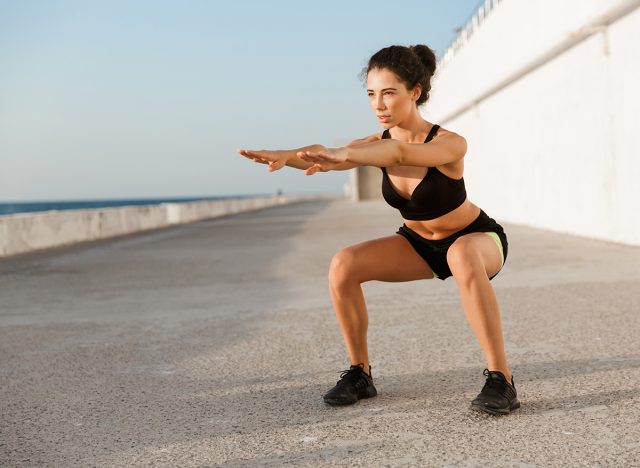
Exercises like push-ups, squats, and planks that use body weight as resistance.
Why: Effective in building muscle tone without extra equipment. Studies show that bodyweight exercises can improve strength and endurance, reducing cardiovascular risks.
What to Do:
- Dedicate 15 minutes to bodyweight workouts daily.
- Follow guided routines or use fitness apps for structure.
- Create a circuit with lunges, squats, and push-ups.
- Incorporate planks to engage your core.
Pitfalls:
– Overdoing exercises and risking injury.
– Skipping workouts due to time constraints.
– Assuming you can't progress without equipment.
Set Fitness Goals

Create small, achievable goals to guide your fitness journey.
Why: Achievable goals help maintain progress and build long-term habits. Research shows SMART goals can increase accountability and motivation.
What to Do:
- Set SMART goals like "Add 500 steps per day."
- Reflect on goals weekly and adjust as needed.
- Share goals with a travel buddy for accountability.
- Track milestones and reward progress thoughtfully.
Pitfalls:
– Setting overly ambitious goals.
– Focusing only on numerical targets.
– Ignoring consistency in favor of quick achievements.
Limit Alcohol Consumption

Minimize alcoholic beverages to avoid "empty" calories.
Why: Alcohol impairs judgment, leading to unhealthy food choices and excess calories. Research shows that alcohol may increase the likelihood of overeating by up to 50%.
What to Do:
- Alternate each alcoholic drink with water.
- Choose low-calorie mixers like soda water.
- Limit yourself to a set number of drinks per event.
- Opt for non-alcoholic alternatives like mocktails.
Pitfalls:
– Relying on sugary mixers with hidden calories.
– Ignoring hydration while drinking.
– Drinking more in social settings.
Incorporate Stretching Daily
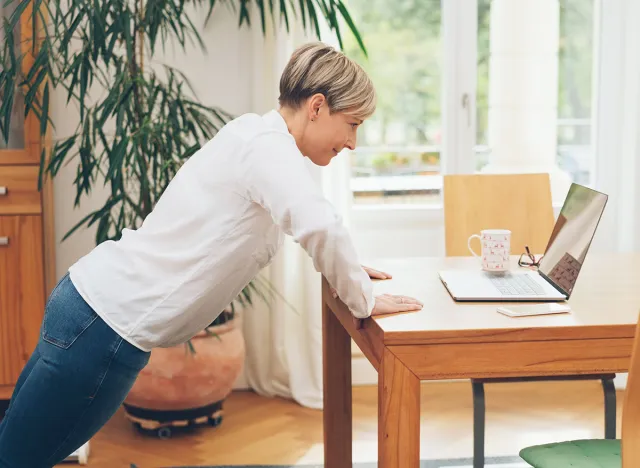
Stretch daily to ease travel-related stiffness and improve flexibility.
Why: Stretching improves circulation and reduces injury risks, enhancing travel comfort.
What to Do:
- Dedicate 10 minutes daily to stretching routines.
- Focus on travel-stressed areas like the lower back.
- Use foam rollers for muscle relaxation.
- Follow guided stretching routines online.
Pitfalls:
– Skipping stretches due to busy schedules.
– Overstretching, leading to muscle strain.
– Not varying stretches for different muscle groups.
Choose Active Accommodations

Stay at hotels with gyms, pools, or nearby parks.
Why: Provides access to fitness facilities that encourage movement and reduce disruption to your routine. Active accommodations boost workout consistency by up to 50%.
What to Do:
- Book hotels with fitness centers or pools.
- Pick hotels near hiking trails or walking paths.
- Check if hotel gyms offer equipment that matches your workout needs.
- Verify the operating hours of gyms before booking.
Pitfalls:
– Ignoring available amenities due to poor planning.
– Choosing solely based on price without considering fitness needs.
– Overlooking nearby outdoor activity options.
Include Resistance Training

Use resistance bands or weights to maintain muscle tone.
Why: Resistance training builds lean muscle, which burns more calories even at rest. Studies show resistance training increases metabolism by up to 15%.
What to Do:
- Pack lightweight resistance bands.
- Follow online tutorials for safe technique.
- Use hotel gym equipment for weight training.
- Focus on compound exercises like squats and deadlifts.
Pitfalls:
– Skipping resistance training due to time constraints.
– Assuming you need heavy weights to see progress.
– Ignoring form, leading to injury.
RELATED: I Lost 30 Pounds Doing the 12-3-20 Method
Plan Fitness-Friendly Itineraries
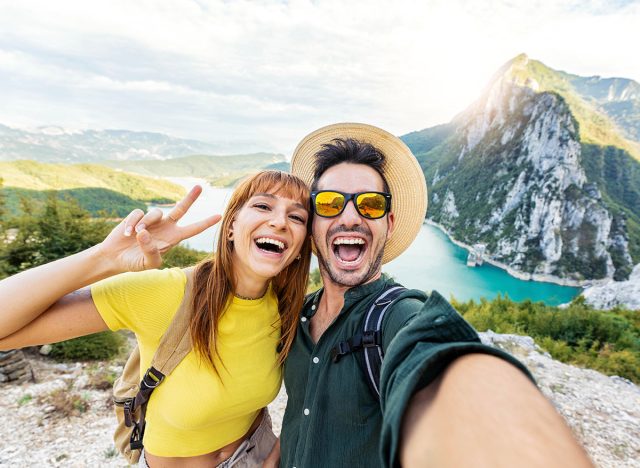
Incorporate sightseeing and activities that require movement.
Why: Keeps you active without needing separate workout sessions. Research reveals that fitness-friendly itineraries may increase physical activity by up to 30%.
What to Do:
- Plan hiking or cycling tours for sightseeing.
- Join local fitness classes to explore new activities.
- Visit cultural landmarks via walking tours.
- Opt for beach activities like paddleboarding or yoga.
Pitfalls:
– Scheduling only sedentary activities like museums.
– Skipping guided fitness activities to save money.
– Overbooking multiple strenuous activities.
Practice Mindful Eating
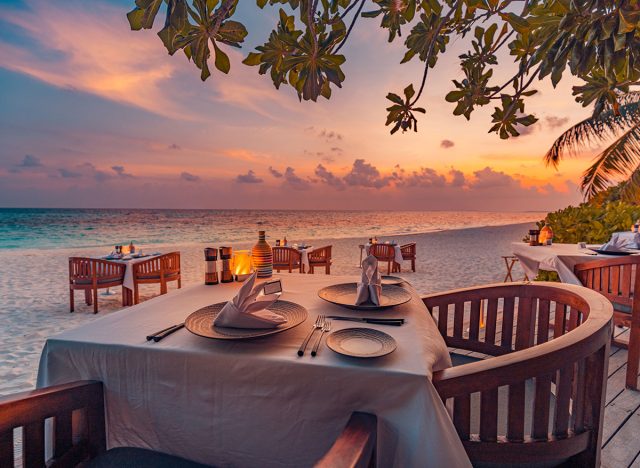
Be aware of portion sizes and hunger cues while eating.
Why: Prevents overeating and helps balance appreciation of local cuisine. Mindful eating reduces binge eating by 50%.
What to Do:
- Share dishes to sample a variety of foods.
- Avoid eating out of boredom or habit.
- Focus on unprocessed foods that provide lasting energy.
- Chew slowly to enjoy flavors and promote fullness.
Pitfalls:
– Eating mindlessly in front of screens.
– Not acknowledging fullness signals.
– Choosing ultra-processed snacks due to stress.
Schedule Rest and Self-Care

Set aside time for relaxing, stretching, or meditation.
Why: Reduces stress and balances energy levels. Research shows that self-care can reduce stress by up to 40%.
What to Do:
- Practice breathing exercises for relaxation.
- Stretch before bed to ease tension and improve sleep.
- Create a restful environment with earplugs and eye masks.
- Dedicate 10 minutes daily to meditation or journaling.
Pitfalls:
– Failing to schedule downtime amid hectic itineraries.
– Ignoring stress, resulting in exhaustion and decision fatigue.
– Skipping relaxation routines due to travel distractions.
Stay Motivated and Accountable

Maintain motivation by engaging with supportive communities or partners.
Why: Accountability reinforces consistency in meeting fitness goals. Studies reveal social support can increase adherence to fitness routines by up to 40% .
What to Do:
1. Set realistic goals and share them with a travel buddy.
- Join online fitness groups for advice and encouragement.
- Stay active with travel companions for motivation.
- Track and celebrate achievements with non-food rewards.
Pitfalls:
– Pressuring yourself with unrealistic expectations.
– Comparing progress to others, leading to discouragement.
– Losing focus and dropping fitness routines due to distractions.
Conclusion: If You Customize Your Plan, You Are More Likely to Succeed
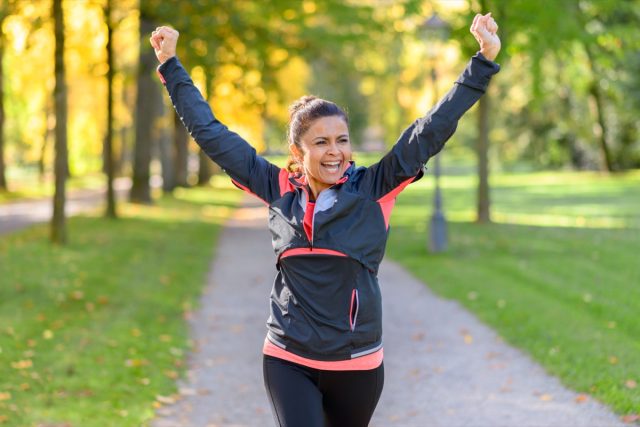
Traveling is a time to explore and enjoy, so don't overwhelm yourself with trying to achieve all 15 tips. Instead, select the top habits using the suggested assessment (or another method) that align with your goals while prioritizing enjoyment. Recognize the core objectives that resonate with your lifestyle, and be gentle with yourself if travel demands prevent sticking to all your plans. By focusing on flexibility and intention, you'll remain on the path to fitness and weight loss while making the most of your travel adventures. Remember that the goal is to feel your best and maintain alignment with what matters most to you.
💪🔥Body Booster: Selecting the habits that fit your unique travel style will help you integrate wellness without overburdening yourself, letting you make the most of your adventures while prioritizing health.




